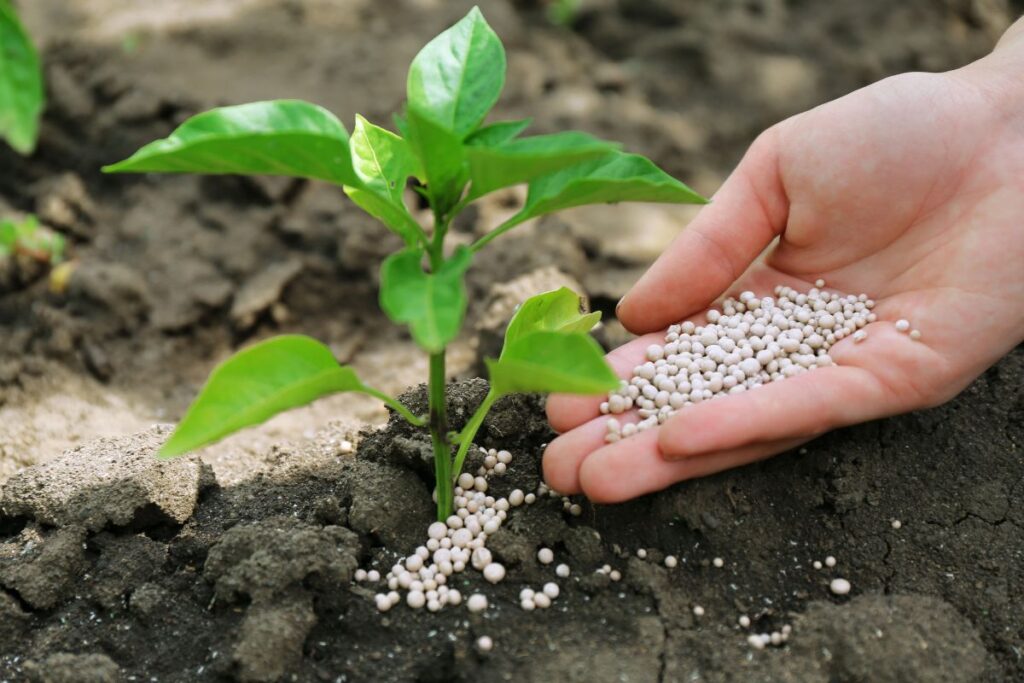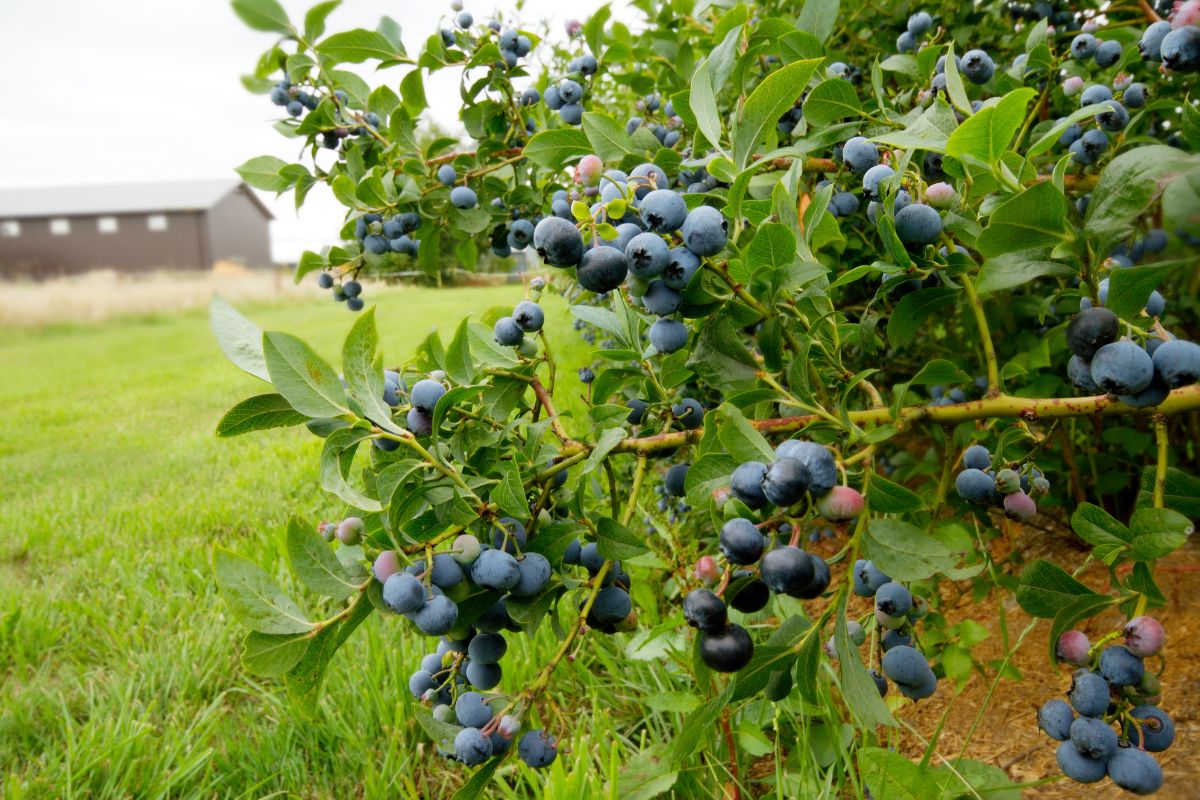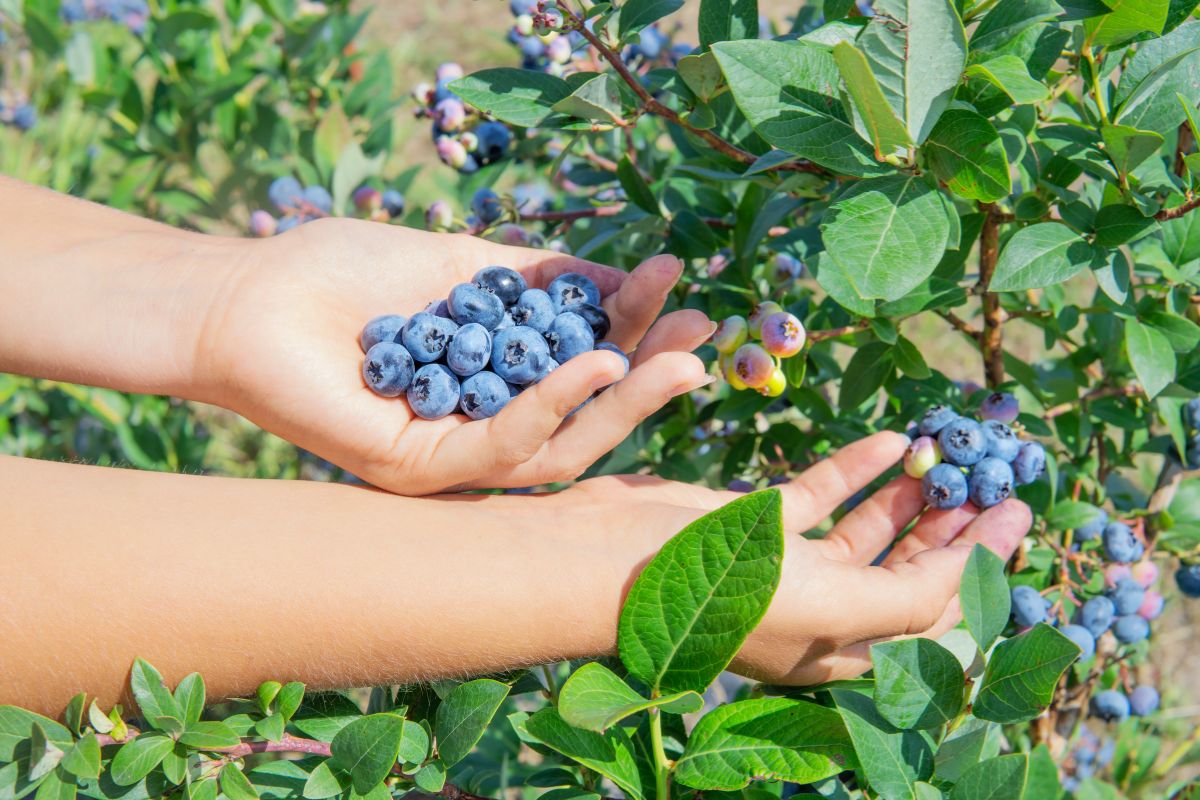Tired of buying blueberries?
Grow your own!
Follow these 10 simple tactics for a bountiful blueberry bush right in your backyard.
Ready to enjoy fresh, homegrown blueberries?
Let’s get started!
1. Choose the Right Blueberry Type

Choosing the correct blueberry variety for your climate is crucial.
Blueberries are categorized into types such as highbush, lowbush, and hybrid half-highs.
Highbush varieties typically thrive in northern climates, while rabbiteye blueberries are better suited for southern regions.
Consult local nurseries or agricultural extensions to determine the best options for your area.
2. Test and Adjust Soil pH
Blueberries thrive in well-draining, acidic soil with the ideal pH ranging from 4.5 to 5.5.
Use a soil pH tester to determine the current pH level. Mix sulfur or organic matter into the soil if adjustments are necessary to maintain this crucial level of acidity.
This consistent acidity ensures optimal nutrient absorption for healthy plants.
3. Ensure Sunlight and Water

Plant your bushes in areas with complete sun exposure to get 6-8 hours of sunlight each day for optimal fruit growth.
Blueberries have shallow roots requiring consistent moisture. Ensure they receive 1-2 inches (2.5 – 5 cm) of water weekly, especially during fruit development and just before harvesting. Maintain a regular watering schedule.
4. Use Mulch
Applying mulch helps keep the soil moist, curbs weeds, and maintains a low soil pH.
Pine bark, pine needles, and sawdust work well for blueberry bushes as they increase soil acidity when they break down.
5. Fertilize Wisely

Use a fertilizer designed for acid-loving plants in the spring.
Avoid fertilizing late in the season to prevent new growth susceptible to winter damage.
Over-fertilization can be detrimental to blueberry bushes, so finding the right balance is crucial.
6. Prune Regularly
Effective pruning is essential for the vitality and yield of your blueberry bushes.
Cut away any diseased or damaged branches, crossing limbs, and excessively productive canes that result in smaller fruit.
This focused pruning directs energy to the plant’s healthiest parts, promoting stronger growth.
7. Safeguard Against Birds and Insects
During fruiting season, netting your bushes can safeguard your crop from birds.
Keep an eye out for pests such as aphids, and employ eco-friendly control methods whenever necessary.
8. Plant Different Varieties

Growing different varieties of blueberries near each other can boost yield and berry size.
Bees are attracted to diverse plants, enhancing pollination. Consider planting multiple types together for optimal growth.
9. Account for Chill Hours
Blueberry bushes need a specific amount of chill hours—temperatures below 45°F (7°C)—to produce fruit effectively.
Make sure to select varieties that align with your area’s winter conditions for the best dormancy period and fruit production.
10. Harvest When Ripe

Wait for berries to reach full ripeness—characterized by a deep blue hue with a greyish surface.
Picking them too soon results in sour, unripe fruits, which is why patience is crucial. Gently pluck the berries to avoid harming the plants and ensure more fruit production over the season.
By adopting these harvesting tips, you can look forward to an abundance of homegrown, delicious blueberries.
Forget about store-bought options; with time and effort, your blueberry bush will be a continual source of fresh, vibrant fruits throughout the season.